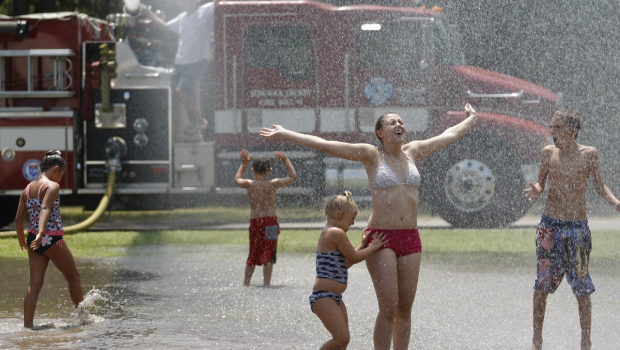In USA July hotness burst 1930s Dust Bowl record
WASHINGTON - This probably comes as no storm: Federal scientists say July was the hottest month ever recorded in the let down 48 states, breaking a record set during the Dust Bowl of the 1930s.
And even less a surprise: The U.S. this year continues setting records for weather extremes, based on the precise calculations that include drought, heavy rainfall, unusual temperatures, & storms.
The mean temperature last month was 77.6 degrees. That breaks the old record from July 1936 by 0.2 degree, granting to the National Oceanic & Atmospheric Administration. Records go back to 1895.
"It's a pretty significant increase over the last record," said climate scientist Jake Crouch of NOAA's National Climatic Data Center in Asheville, N.C. In the past, skeptics of global warming have indicated to the Dust Bowl to argue that recent heat isn't unprecedented. But Crouch said this shows that the current year "is out & beyond those Dust Bowl years. We are rivaling & beating them consistently from month to month."
Three of the nation's 5 hottest months on record have been recent Julys: This year, 2011 & 2006. Julys in 1936 & 1934 round out the top 5.
Last month also was 3.3 degrees warmer than the twentieth century average for July.
32 states had months that were among their 10 warmest Julys, but only one, Virginia, had the hottest July on record. Crouch said that's a bit strange, but that it shows the breadth of the heat & associated drought.
Crouch said, “For example in 2011, the heat seemed to be centered mostly in Oklahoma & Texas. But this summer "the epicenters of the heat kind of migrated around. It kind of got everyone in the action this month."
The first 7 months of 2012 were the warmest on record for the nation. And August 2011 through July this year was the warmest 12 months period on record, just beating out the July 2011 - June 2012 time period.
But it is not just the heat that's noteworthy. NOAA has a measurement called the U.S. Climate Extreme Index which dates to 1900 & follows several indicators of remarkably high & low temperatures, severe drought, downpours, & tropical storms & hurricanes. NOAA calculates the index as a part, which mostly reflects how much of the nation extremes feel. In July, the index was 37%, a record that beat the old mark for July last year. The average is 20%.
For the first 7 months of the year, the extreme index was 46%, beating the old record from 1934. This year's extreme index was heavily driven by high temperatures both day & night, which is unusual, Crouch said.
Pennsylvania State University climate scientist Michael Mann said, "This would not have happened in the absence of human caused climate change."
Crouch & Kevin Trenberth, climate analysis chief of the National Center for Atmospheric Research, said what's happening is a double whammy of weather & climate change. They point to long term higher night temperatures from global warming % the short term effect of localized heat & drought that spike daytime temperatures.
Trenberth said, “drought is a major player because in the summer "if it is wet, it tends to be cool, while if it is dry, it tends to be hot."
So the record in July is not such a big deal, Trenberth said. "But the fact that the first 7 months of the year are the hottest on record is much more impressive from a climate standpoint, & highlights the fact that there is more than just natural variability playing a role: Global warming from human activities has reared its head in a way that can only be a major warning for the future."
Here are some more numbers unlikely to provide cold comfort. The coolest July on enter was in 1915. The coldest month in U.S. history was January 1979 with an average temperature of 22.6 degrees.


Comments
Post a Comment